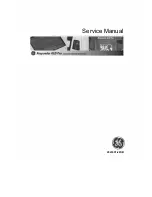
166
A Brief Introduction to the SCPI Language
Overview
Overview
This section is not intended to teach you everything about the SCPI (Standard Commands for
Programmable Instruments) programming language. The SCPI Consortium or IEEE can provide that
level of detailed information.
Programming with SCPI requires knowledge of:
•
Computer programming languages, such as C, C++, and Microsoft
Visual Basic
•
The language of your instrument, such as MXA or FSP
Topics covered in this chapter include:
•
“SCPI Language Basics” on page 166
•
“Command Syntax” on page 167
•
“Creating Valid Commands” on page 168
•
“Special Characters in Commands” on page 169
•
“Parameters in Commands” on page 169
•
“Putting Multiple Commands on the Same Line” on page 172
For more information refer to:
IEEE Standard 488.1-2004,
IEEE Standard Digital Interface for Programmable Instrumentation.
New York, NY, 1998.
IEEE Standard 488.2-2004,
IEEE Standard Codes, Formats, Protocols and Comment Commands for
Use with ANSI/IEEE Std 488.1-1987
. New York, NY, 1998.
SCPI Language Basics
SCPI is an ASCII-based instrument command language designed for test and measurement instruments,
with the goal of reducing automatic test equipment (ATE) program development time.
SCPI accomplishes this goal by providing a consistent programming environment control and data
usage. This consistent programming environment is achieved by the use of defined program messages,
instrument responses, and data formats across all SCPI instruments.
By providing a consistent programming environment, replacing one SCPI instrument with another SCPI
instrument in a system will usually requires less effort than with non-SCPI instrument.
SCPI is not a standard which completely provides for interchangeable instrumentation. SCPI helps move
toward interchangeability by defining instrument commands and responses, but no functionality,
This Manual:http://www.manuallib.com/agilent/n9062a-signal-analyzer-user-guide.html









































